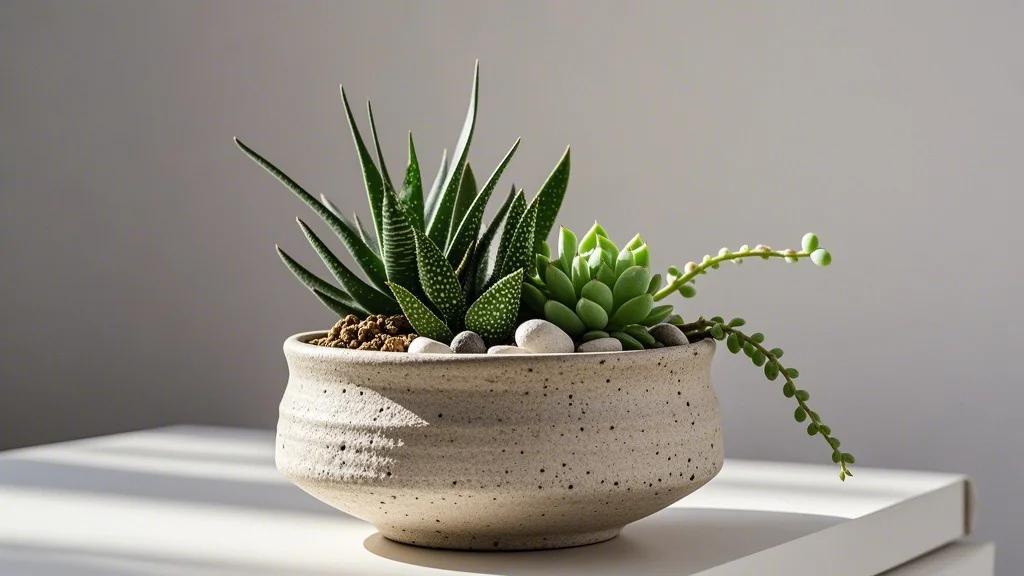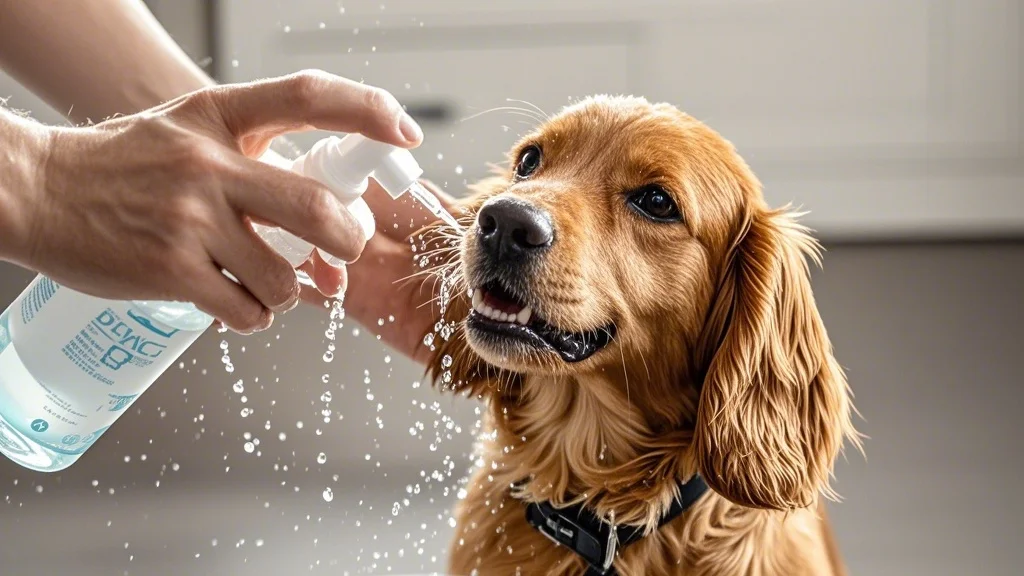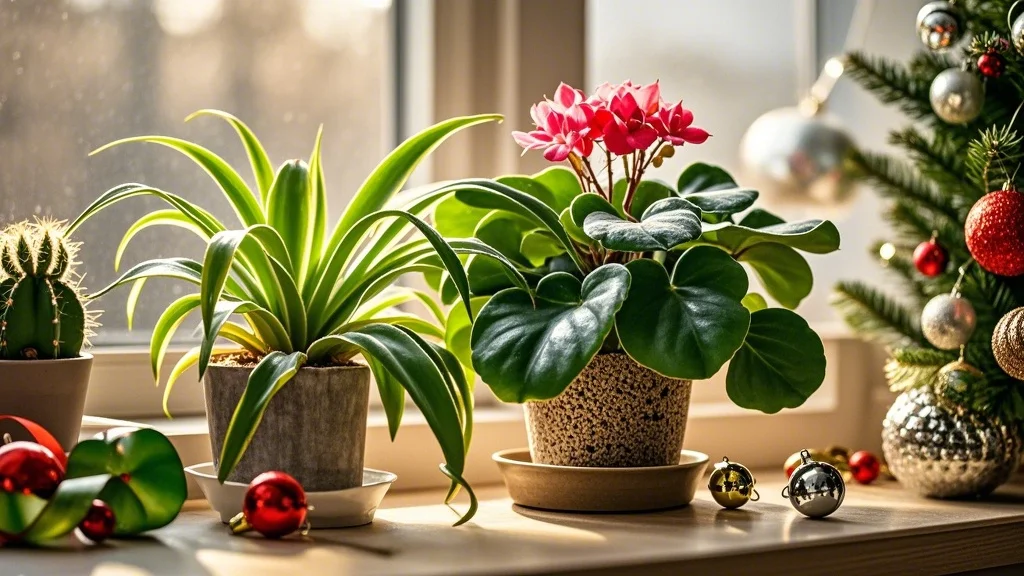For pet owners who are also plant enthusiasts, creating a beautiful indoor garden that’s safe for furry friends can be a delightful challenge. This guide will walk you through the process of building a pet-safe plant collection, ensuring your home remains both green and pet-friendly.
Contents
- 1 Understanding Pet-Plant Interactions
- 2 Researching Pet-Safe Plants
- 3 Designing Your Pet-Safe Plant Collection
- 4 Strategic Placement
- 5 Creating Pet-Deterrent Barriers
- 6 Maintenance and Care
- 7 Expanding Your Collection Safely
- 8 Creating Plant-Focused Play Areas for Pets
- 9 Educating Family Members and Visitors
- 10 Monitoring and Adjusting
- 11 Troubleshooting Common Issues
- 12 Building a Support Network
- 13 Celebrating Success
- 14 Conclusion
Understanding Pet-Plant Interactions
Before diving into plant selection, it’s crucial to understand how pets typically interact with plants:
- Cats may nibble on leaves or bat at dangling vines
- Dogs might dig in soil or chew on stems
- Both can knock over pots or urinate in planters
Knowing these behaviors helps in strategically placing and protecting your plants.
Researching Pet-Safe Plants
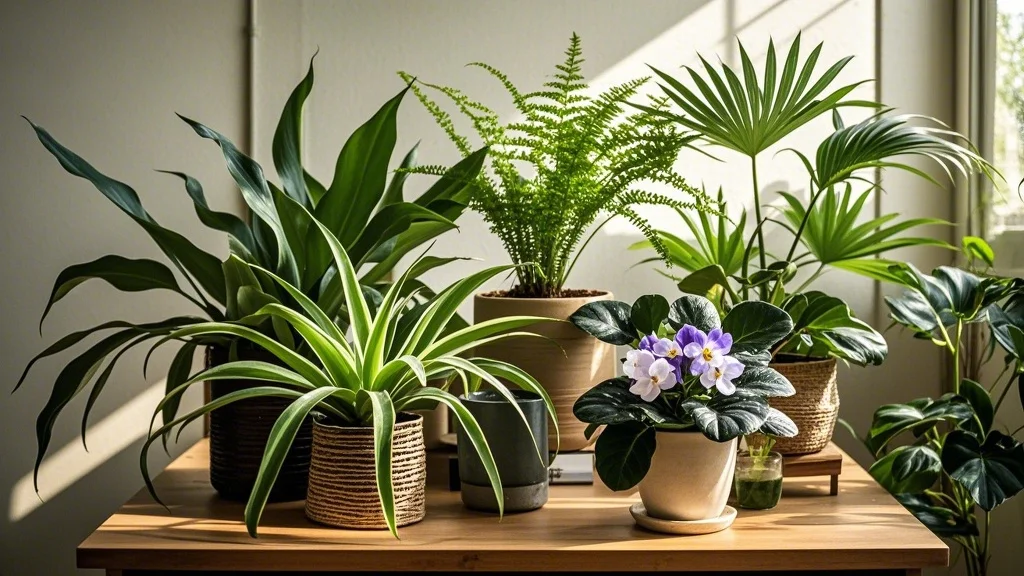
The foundation of a pet-safe plant collection is thorough research. Here are some reliable pet-safe plants to consider:
- Spider Plant (Chlorophytum comosum)
- Boston Fern (Nephrolepis exaltata)
- African Violet (Saintpaulia)
- Parlor Palm (Chamaedorea elegans)
- Ponytail Palm (Beaucarnea recurvata)
- Haworthia
- Echeveria
- Peperomia
- Calathea
- Areca Palm (Dypsis lutescens)
Always double-check with reputable sources like the ASPCA’s toxic and non-toxic plant list before adding a new plant to your collection.
Designing Your Pet-Safe Plant Collection
Variety in Form and Function
To create an interesting and diverse collection:
- Mix leaf shapes: Include plants with broad leaves (like Calathea) and thin, grassy leaves (like Spider Plants).
- Vary plant sizes: Combine floor plants, tabletop plants, and hanging plants.
- Include different textures: Pair smooth-leaved plants with fuzzy or succulent varieties.
Color Considerations
Even with pet-safe plants, you can create a colorful display:
- Green variations: From deep forest greens to variegated patterns
- Flowering plants: African Violets offer pops of purple, pink, or white
- Colorful foliage: Some Calathea varieties have striking patterns and colors
Strategic Placement
Proper placement is key to protecting both plants and pets:
- High shelves: Place smaller plants out of reach
- Hanging baskets: Ideal for trailing plants like Spider Plants
- Plant stands: Elevate larger plants while adding visual interest
- Window sills: Perfect for sun-loving succulents (ensure they’re secure)
Creating Pet-Deterrent Barriers
Even with non-toxic plants, you may want to discourage pet interaction:
- Pebble topping: Cover soil with large pebbles to prevent digging
- Citrus peels: Many pets dislike the smell of citrus; place peels in the soil
- Plant cages: Use decorative cages for extra protection
- Double-pot method: Place the plant pot inside a larger, heavier pot for stability
Maintenance and Care
Proper care ensures your plants thrive and remain safe:
- Regular pruning: Remove dead leaves and control plant size
- Clean-up: Promptly dispose of fallen leaves or debris
- Pest control: Use pet-safe methods to manage pests
- Watering routine: Avoid overwatering to prevent mold growth
Expanding Your Collection Safely
As your green thumb grows, expand your collection thoughtfully:
- One at a time: Introduce new plants gradually to observe pet reactions
- Quarantine: Keep new plants separate initially to prevent pest spread
- Seasonal rotations: Switch out plants based on seasonal needs and growth patterns
Creating Plant-Focused Play Areas for Pets
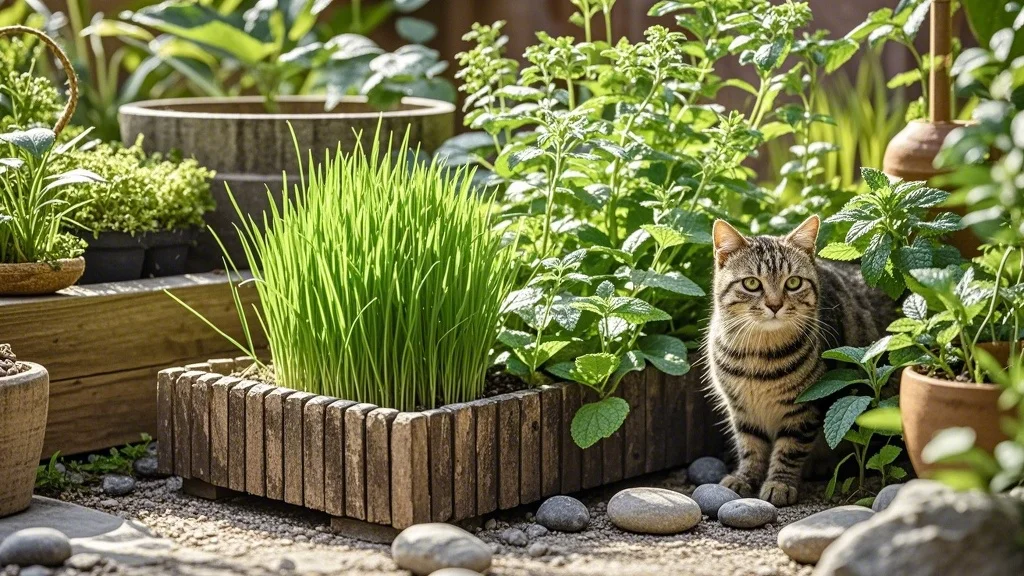
Redirect your pet’s attention from your prized plants:
- Cat grass: Grow safe, edible grass for cats to nibble
- Catnip garden: Create a designated area for cats to enjoy catnip
- Dog-friendly herb garden: Grow pet-safe herbs like basil or parsley
Educating Family Members and Visitors
Ensure everyone in your household understands the importance of plant safety:
- Label plants: Use decorative tags to identify pet-safe plants
- Create a care guide: Document watering and care instructions for each plant
- Inform guests: Let visitors know about your pet-safe plant policy
Monitoring and Adjusting
Regular observation helps maintain a harmonious plant-pet environment:
- Watch for changes: Note any alterations in plant or pet behavior
- Seasonal adjustments: Move plants as needed for optimal light and temperature
- Health checks: Regularly inspect both plants and pets for signs of distress
Troubleshooting Common Issues
Even with careful planning, issues may arise:
- Persistent chewing: Try bitter apple spray on leaves (test a small area first)
- Soil digging: Use larger rocks or attractive mulch as a deterrent
- Plant stress: Adjust care routines or placement if plants show signs of struggle
Building a Support Network
Connect with other pet-owning plant enthusiasts:
- Join online forums: Share experiences and get advice
- Local gardening clubs: Find pet-friendly gardening groups in your area
- Consult experts: Build relationships with local nurseries and veterinarians
Celebrating Success
As your pet-safe plant collection grows, take time to enjoy your achievements:
- Document progress: Take photos to track your collection’s growth
- Share your story: Inspire others by sharing your pet-safe gardening journey
- Enjoy the benefits: Appreciate the improved air quality and aesthetic appeal of your home
Conclusion
Creating a pet-safe plant collection requires careful planning, research, and ongoing care. By following these strategies, you can cultivate a lush, varied indoor garden that’s safe for your furry companions. Remember, the key to success lies in understanding both your plants’ and pets’ needs, and finding creative ways to meet them both. With patience and dedication, you’ll soon have a thriving, pet-friendly urban oasis that brings joy to all inhabitants of your home.

